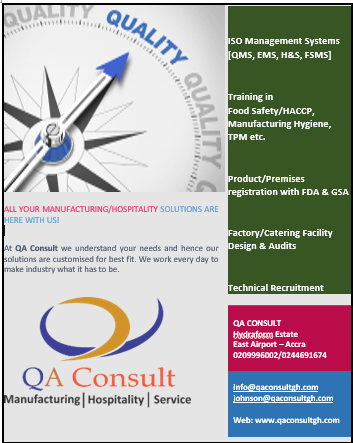Quality objectives
“Objectives are not fate; they are direction. They are not commands; they are commitments. They do not determine the future; they are a means to mobilise resources and energies of the business for the making of the future.” – Peter Drucker. In today’s business world, quality management is key if the expectations of customers are to be met. The ISO 9001 standards provide organisations the perfect opportunity to establish a quality management system that is fit for purpose. Every organisation establishing such a system must have a quality policy and quality objectives as stated in clause 6.2.1 of ISO 9001:2015 – “The organisation shall establish quality objectives at relevant functions, levels and processes needed for the quality management system”.
In order to satisfy customer requirements, top management of the organisation set quality objectives each year. As an organisation, it is important to ensure that quality objectives are measurable and consistent with the quality policy of the organisation. Hence, without a quality policy it is practically impossible to set sound quality objectives for your business. These objectives must be established at all relevant departments and levels within the organisation.
The objectives should include those needed to meet requirements for the product. In some cases, certain objectives may run throughout the life of an organisation. The basic principle, however, is that quality objectives should emanate from outcomes of the organisation’s activities. It is said that one spends more time on things that need improvement. Similarly, quality objectives reflect all the items which need continual improvement in the organisation. Some examples will be provided in this article. Management review is therefore critical in revealing items that could be reflected in the organisation’s quality objectives.
Developing Quality Objectives
The organisation must understand that developing quality objectives provides it with the opportunity to identify areas of inefficiency. The organisation can then address such areas to improve customer satisfaction. The Quality Manager is usually the coordinator for the quality objectives across departments. It is the responsibility of department Heads to establish quality objectives from inefficiencies detected from their individual departments.
The Coordinator convenes a meeting to finalise the quality objectives for each department. The final objectives carved from this meeting are then forwarded to top management for consideration in the management review meeting. According to ISO 9001:2015, the quality objectives shall: a) be consistent with the quality policy; b) be measurable; c) take into account applicable requirements; d) be relevant to conformity of products and services and to enhancement of customer satisfaction; e) be monitored; f) be communicated; g) be updated as appropriate.
The organisation shall maintain documented information on the quality objectives. When planning how to achieve its quality objectives, the organisation shall determine: a) what will be done; b) what resources will be required; c) who will be responsible; d) when it will be completed; e) how the results will be evaluated.
SMART Quality Objectives
Quality objectives are crafted in the form of SMART targets: meaning they must be specific, measurable, achievable, realistic and time-bound. Top management, before signing-off the quality objectives, ensure that the activities listed under each of the headings are clearly linked to the organisation’s quality policy.
The quality objectives are set to be realistic and related to achievable outcomes: such as meeting agreed customer requirements for delivery or other product characteristics within a certain period of time; meeting regulatory and other requirements for product and services; meeting the planned schedule for achieving the quality objectives targets; identifying opportunities for improvement; minimising the cost of poor quality, rework or scrap; and last but not least, identifying new opportunities. In pursuing relevant objectives, the organisation must consider all sections as appropriate. These include, for instance, process performance targets and continual improvement targets established at human resources, production and sales departments.
Employees should be able to relate to activities under the quality objectives as established. Department Heads should ensure this is achieved. These activities should be established such that they can be measured. Examples of such activities are: reducing the production time; achieving no failures or defects in production; achieving cost-reduction; reducing consumer complaints etc.
Communicating Quality Objectives
Top management of the organisation should understand that to achieve its quality objectives, the entire organisation should be aware of the specific quality objectives set for their individual departments and how they can achieve them. This is done through training sessions and campaigns. Visual campaigns relating to quality objectives is one sure way of keeping them top of mind.
Monitoring Quality Objectives
Peter Drucker once said: “What gets measured gets managed”. Monitoring is crucial for any improvement activity. Top management must understand that without monitoring, set objectives may not be achieved. Monitoring and measurement activities should be planned and carried out to carefully improve the organisation’s quality ambitions.
Opportunity must be taken at the annual management review meetings to consolidate quality objectives from the various departments and ensure continual improvement of the quality management system. The Quality objectives are monitored from the input information received from the following: Internal and external audits; Customer feedback; Process performance reports; and Product conformity reports, etc.
Conclusion
Your organisation has the opportunity to grow exponentially if quality is taken a bit more seriously. Although ISO 9001:2015 does not mention a Management Representative (MR) as the previous version did, it is a good idea for every organisation to maintain one. The MR will be responsible in coordination of the QMS throughout the organisation. The MR is tasked to keep an eye on all the activities specified under the quality objectives, and feed-back to top management during the monthly, quarterly or annual review meetings. If there is need for improvement, the MR presents it at the meeting for top management support. From the above, establishing quality objectives has enormous benefits for your business and must not be left out.

Johnson Opoku-Boateng is the Founder & Lead Consultant, QA CONSULT (Consultants and Trainers in Quality Assurance, Health & Safety, Environmental Management systems, Manufacturing Excellence and Food Safety). He is also a consumer safety advocate and helps businesses with regulatory affairs. He can be reached on +233209996002, email: [email protected]; [email protected]










